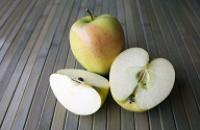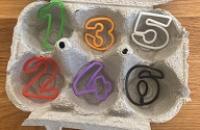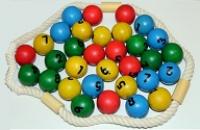Saying how many there are without counting





Children often enjoy hiding games, especially if they involve gems, jewels or golden coins!
Adults could provide 'hide and reveal' games that prompt children to subitise or see the number of the group without counting.
The Activity
Put three bowls over one, two and three jewels.
Quickly lift and replace one bowl and challenge children to say how many there are.
Swap the bowls around rapidly for a minute. When you stop, can they point to the bowl with three? Lift the bowl and see if children can instantly say whether they are right.
Encouraging mathematical thinking and reasoning:
Describing
Can you see how many there are?
How did you see them?
Reasoning
How did you know there were three?
Opening Out
Can you make some different patterns with four jewels?
How can you arrange five jewels so you can quickly see there are five?
Recording
Draw, stamp, sticker or take a photo for your favourite patterns for 5.
The Mathematical Journey
Shape, space and position:
- using spatial language, such as 'above' and 'underneath', including shape names or properties, such as 'in a line' or 'triangle'
Number:
- perceptual subitising - saying how many there are without counting
- conceptual subitising - saying how many there are by subitising two subgroups and combining the numbers e.g. "I knew there was three because there was one and two"; "Four - I saw two and two"
- counting and cardinality - counting to check how many there are
- counting irregular arrangements of things
Development and Variation
- Connect to story contexts, such as dragons stealing jewels and hiding them in caskets or caves.
- Use two colours of jewels and see if children can say how many there are of each e.g. one blue and two red.
- Put groups of two or three things on plates and ask children to find plates that are the same, or make one 'odd' and ask children to find one not the same as the others.
- Pairs of children can take turns to secretly hide a small number of jewels or cubes under a dish and then lift it briefly for the other to say how many there are.
- Increase numbers to four and five. For larger numbers, see if children can estimate how many there are: who made a good guess?
- Make a number of sounds with a drum and ask children to show that many fingers.
- Challenge children to find five jewels in a sand tray, or amongst pebbles in a box, and discuss how many they have found and how many they are still looking for.
- Use large magnets on a tin tray (see the Number Talk Images website, ntimages.weebly.com)
Resources

Jewels or 'nuggets', gold coins, pounds or pennies, conkers or pebbles of roughly equal size, cotton wool balls, identical shape blocks.
Paper bowls to cover the jewels.
Other containers or things to hide or screen the objects e.g. boxes or pieces of card.
Clements and Sarama's Learning Trajectories website has many subitising activities, including videos of this one: learningtrajectories.org
Acknowledgement: Clements and Sarama at Learning Trajectories

